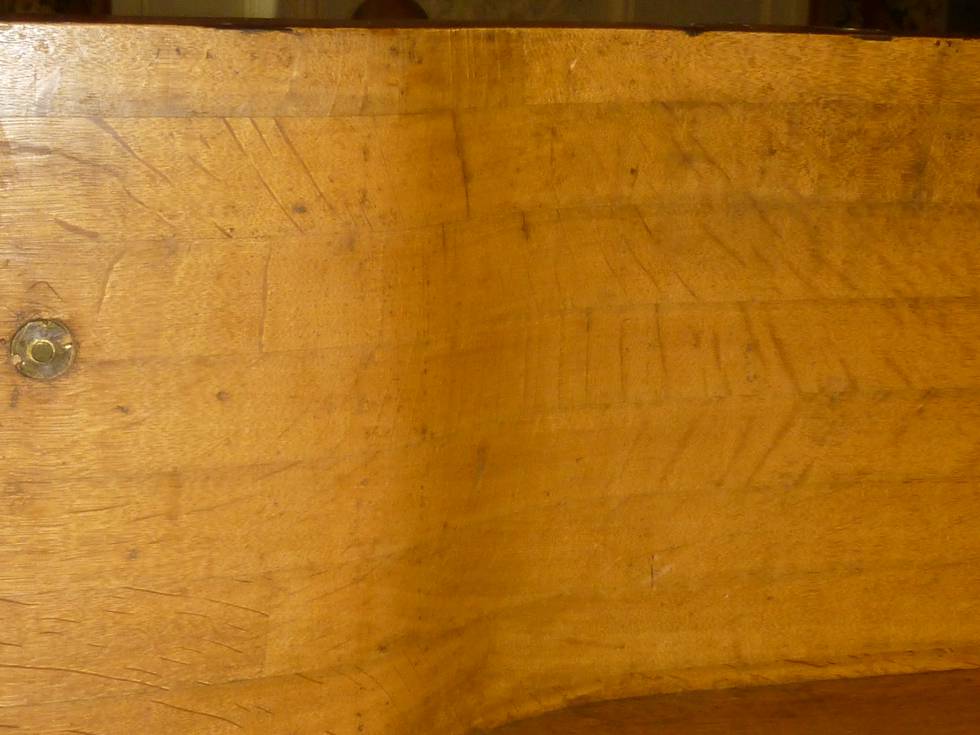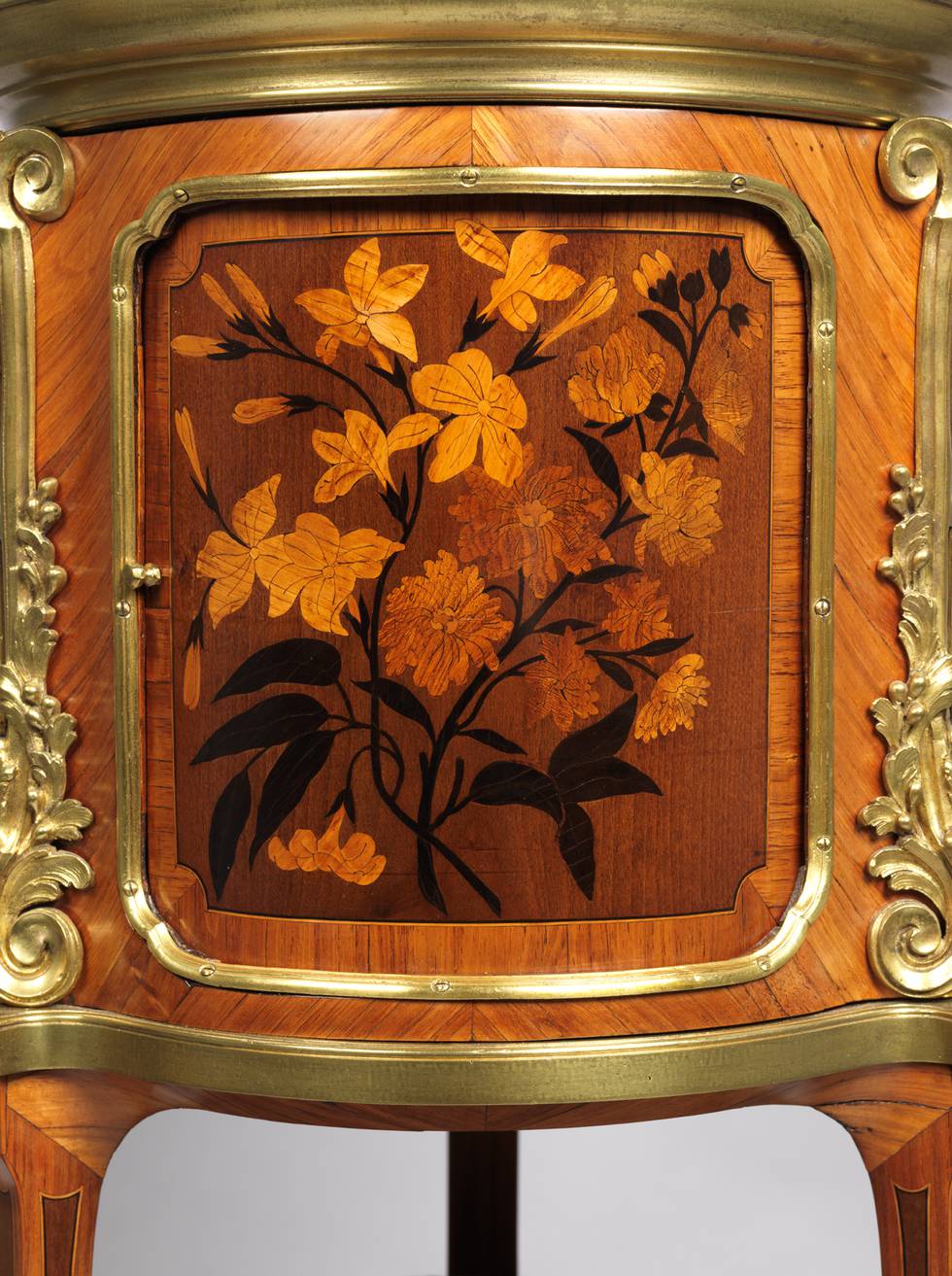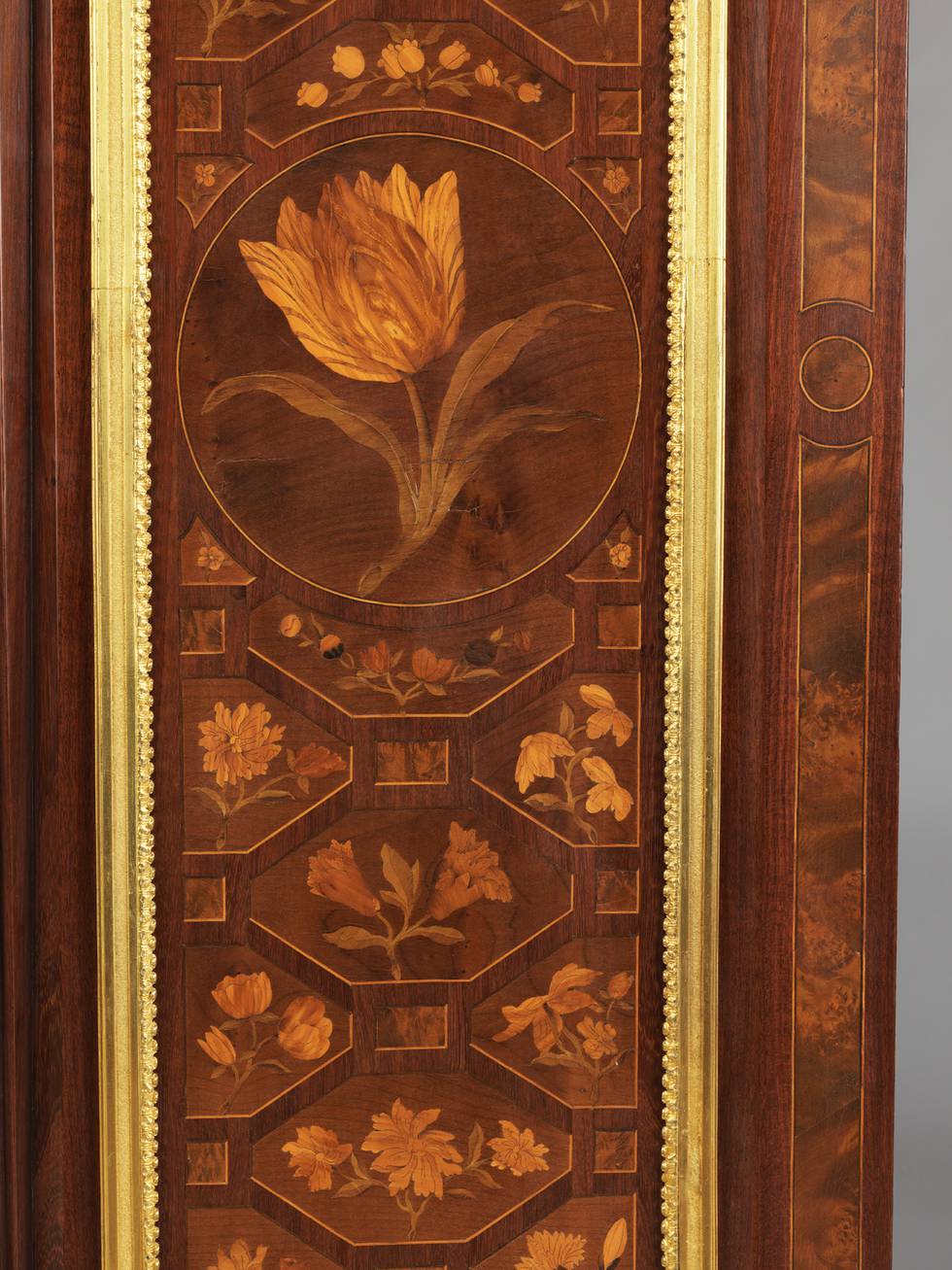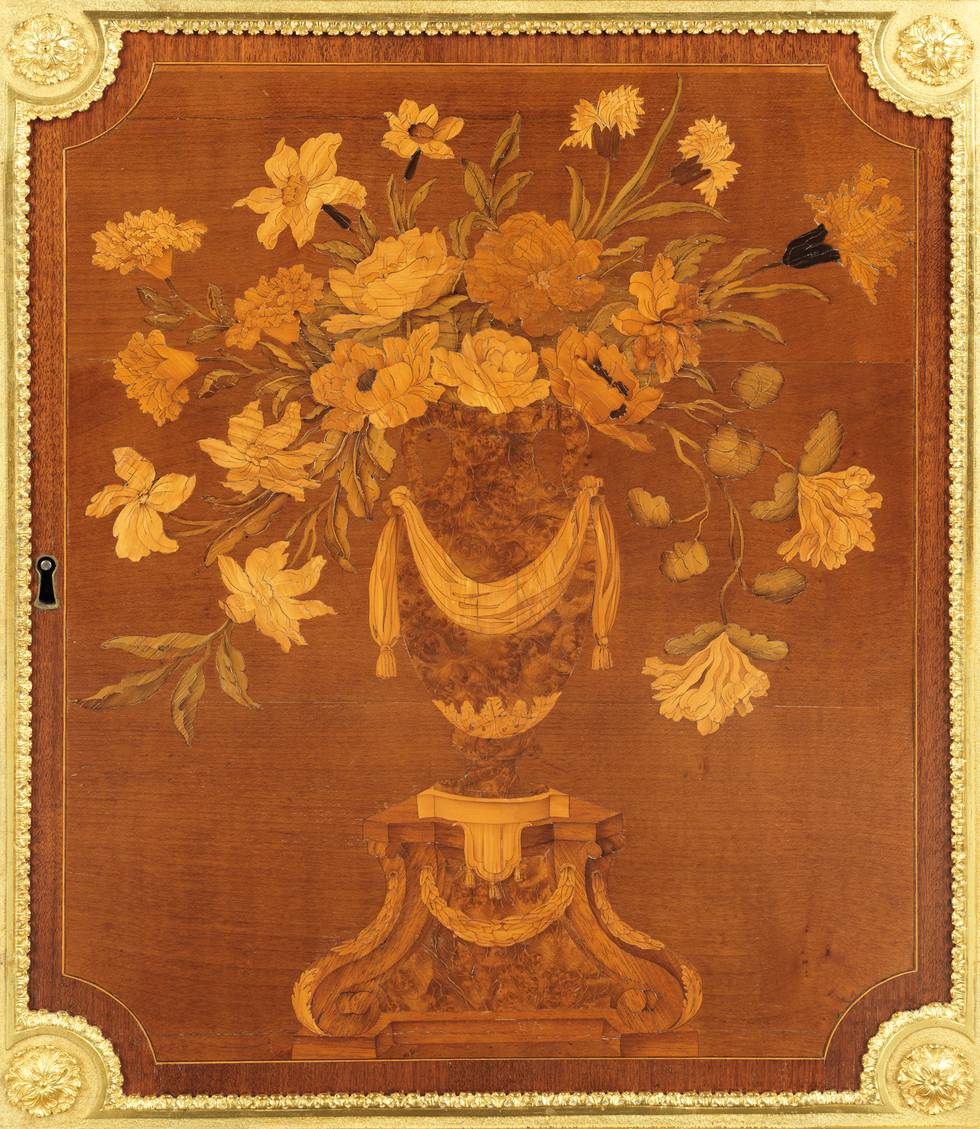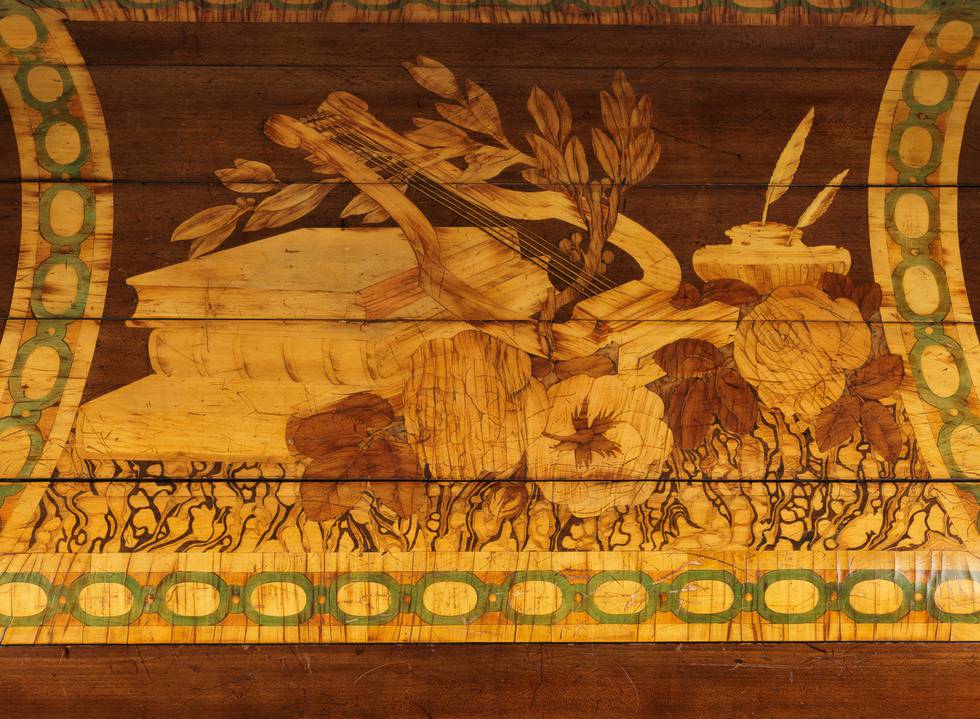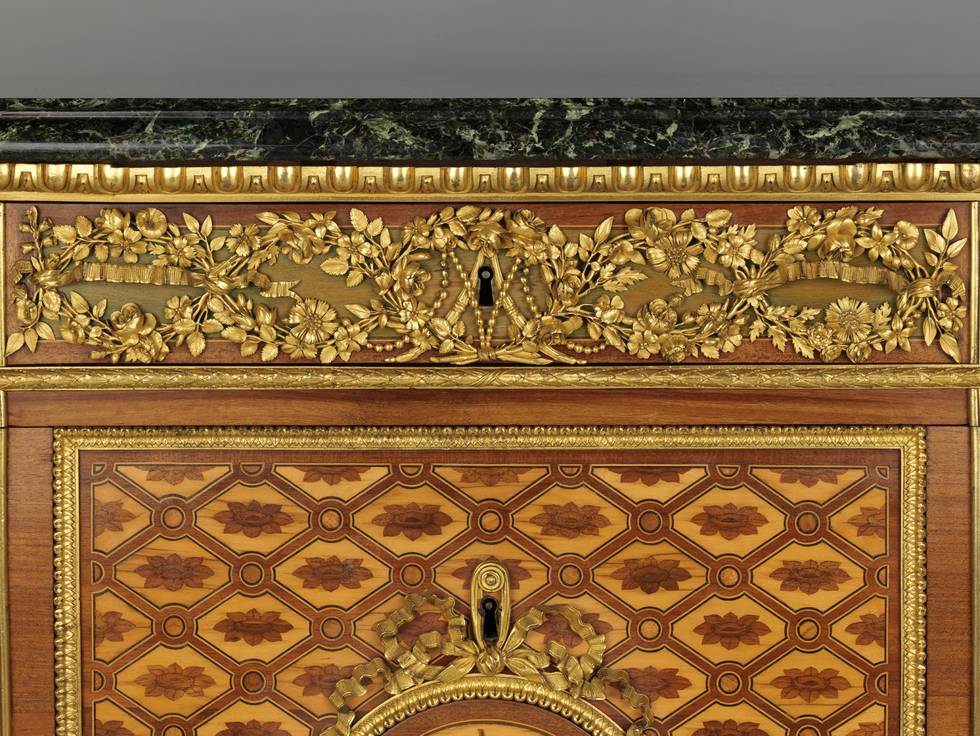A true master of the art of cabinetmaking, Riesener had a remarkable talent for designing furniture and selecting the most appropriate materials and techniques to create it.
His rigorous training through the French guild system and his time in Jean-François Oeben's workshop exposed him to a diverse range of cabinetmakers, professional practices and joinery techniques, all of which influenced him. However, the primary influence on Riesener was Oeben, who, as official cabinetmaker to the king, was at the forefront of French furniture design, using sophisticated mounts, marquetry and joinery techniques to accomplish his work.
Oeben’s legacy remained with Riesener throughout most of his career. He drew frequently on his master’s practices and improved them, before taking his own course.
The most notable example of this is the King’s Desk, which was started by Oeben but completed by Riesener. Oeben devised the innovative roll-top design which Riesener went on to reuse and refine, making it one of his trademark furniture models.
He also continued to develop a number of joinery techniques pioneered by Oeben, such as laminating small sections of timber to create curved structures and his sophisticated mechanical and locking systems.
Riesener was renowned for his marquetry, just as Oeben had been before him. Floral marquetry was a major element of both cabinetmakers’ work, with designs often taken from Louis Tessier’s Livre de Principes de Fleurs (Book on the Principles of Flowers).
Riesener later reimagined floral marquetry within geometric patterns; work of great skill and precision.
In Riesener’s work, pictorial marquetry was elevated to new heights of naturalism and took the form of vases of flowers or trophies of literary, scientific, pastoral or national attributes.
He achieved this by assembling many pieces of dyed and naturally coloured woods, like a jigsaw puzzle, before using a variety of techniques, such as engraving and sand shading, to accent their fine details.
Riesener’s furniture is associated with jewellery-like gilt-bronze mounts, consisting of interlaced acanthus leaves and flowers, busts and masks in a neoclassical style, as well as floral swags and pendants. The quality and refinement of these mounts reached their height during the 1780s, particularly on the furniture he made for Marie-Antoinette.
The guild system at this time prevented Riesener from producing his own mounts, meaning he had to outsource the work. One of his most frequent collaborators was the bronze worker Étienne Martincourt.
As a cabinetmaker, Riesener may have been considered a craftsman but he clearly considered himself an artist. In the mid-1780s, at the peak of his celebrity, Riesener commissioned a self-portrait, which depicts him in the guise of an artist. Instead of being surrounded by tools and benches, he is portrayed in silk and lace, sitting at one of his own tables, with a red chalk in his hand working on a design for furniture mounts.
